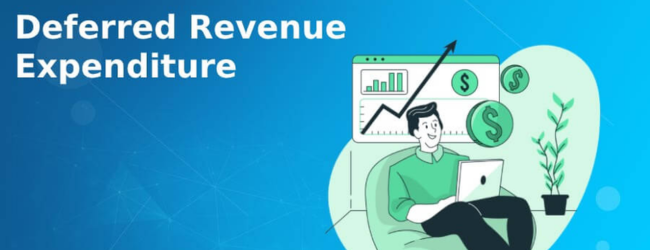Table of contents
- What is Deferred Revenue Expenditure?
- Characteristics of Deferred Revenue Expenditure
- Examples of Deferred Revenue Expenditure (Especially from India)
- Accounting Treatment of Deferred Revenue Expenditure
- Why is Deferred Revenue Expenditure Important?
- Deferred Revenue Expenditure vs Capital Expenditure vs Revenue Expenditure
- Pros & Cons of Deferred Revenue Expenditure
- Key Takeaways
- Conclusion
- Frequently Asked Questions (FAQs)
In business, not all expenses are limited to a single year. Some costs, though revenue in nature, benefit the organisation for multiple years. Such costs are termed Deferred Revenue Expenditure.
If you’re a student, an accounting professional, or a business owner, knowing how this concept works is essential. It directly affects financial statements, profit calculations, and tax planning.
What is Deferred Revenue Expenditure?

Deferred Revenue Expenditure refers to the revenue-nature expenses that are incurred in one accounting year but whose benefits are expected to be derived in future years.
- These are not capital expenditures, because they do not create long-term physical assets.
- These expenses are written off (amortised) over a few financial years, instead of fully charging them in the year of spending.
Characteristics of Deferred Revenue Expenditure
- Large in amount
- Benefits last beyond the current financial year
- Written off over 2 or more years
- Shown on the assets side of the balance sheet (under miscellaneous expenditures, if not fully written off)
- Revenue in nature, not capital
- Does not result in ownership of an asset
ALSO READ – Major Difference Between Capital Expenditure and Revenue Expenditure for Indian Businesses
Examples of Deferred Revenue Expenditure (Especially from India)
| Expense Type | Why Deferred? | Example from India |
| Heavy advertising | Long-term brand impact | Coca-Cola India’s product launch ads |
| Employee training costs | Improved future productivity | Infosys training programs for new hires |
| Market research for new products | Helps in long-term strategy | Marico is conducting rural consumer studies |
| Preliminary company setup expenses | Useful for years to come | Setting up a new IT branch in Bangalore |
| Product launch and branding expenses | Benefits realised over multiple years | Flipkart’s Big Billion Days launch campaign |
Accounting Treatment of Deferred Revenue Expenditure
1 . Initial Year (Spending Year):
Recorded as an asset in the balance sheet under “Miscellaneous Expenditures not written off”.
2 . Subsequent Years:
A portion of the expense is transferred to the Profit & Loss Account each year (called amortisation).
3 . Full Write-off:
After a few years (as per estimation), the expense is completely written off.
Why is Deferred Revenue Expenditure Important?
- Helps in fair presentation of profit/loss by not burdening one year with huge costs.
- Useful for long-term business planning.
- Aids in accurate performance analysis.
- Improves investor confidence by showing stable financial results.
ALSO READ – What is Deferred Revenue? A Beginner’s Guide for Business Owners
Deferred Revenue Expenditure vs Capital Expenditure vs Revenue Expenditure
| Basis | Deferred Revenue Expenditure | Capital Expenditure | Revenue Expenditure |
| Nature | Revenue | Capital | Revenue |
| Duration of benefit | More than 1 year | Several years | One year |
| Shown in the balance sheet | Yes (as an asset, temporarily) | Yes (as fixed asset) | No |
| Example | Heavy advertisement | Buying machinery | Office rent |
Pros & Cons of Deferred Revenue Expenditure

Advantages
- Ensures smooth profit reporting
- Useful for strategic expense management
- Improves financial ratios in the short term
- Beneficial in tax planning
Disadvantages
- Can be misused to manipulate profits
- Adds complexity to financial statements
- Overestimation of benefits may cause future losses
Real-World Indian Example: Amul’s Advertising Strategy
Amul frequently runs national-level advertising campaigns that benefit the brand image over several years. These large-scale advertising costs are often categorised as deferred revenue expenditure, written off over 3–5 years, ensuring stable financial results.
Key Takeaways
- Deferred revenue expenditure is a revenue expense whose benefits last more than one accounting year.
- Though not classified as an asset, it is amortised over a period of time.
- Common examples in India include heavy advertising campaigns, launch expenses, and employee training programs.
- This concept helps in accurate profit reporting by spreading costs over multiple years.
- It’s a crucial topic in financial accounting, CA exams, and business decision-making.
Learn more about Business skills here to unlock new growth opportunities
Need Expert Guidance?
Starting a business can be challenging, but you don’t have to do it alone! At Boss Wallah, our 2,000+ business experts are ready to provide valuable insights and guidance. Whether you need help with marketing, finance, sourcing, or any other area of your business, our business experts are here to help you succeed
Confused about Which Business to Start?
Want to start your own business but unsure which one to choose? Explore Boss Wallah, where you’ll find 500+ courses by successful business owners, featuring practical, step-by-step guides on starting and growing various businesses. Find your perfect business idea today
Conclusion
Understanding deferred revenue expenditure is crucial for accurate financial reporting, whether you’re preparing for exams or managing business accounts. Spreading large revenue expenses across multiple years allows businesses to present a more realistic picture of profits.
Explore more blogs to learn more about Business
Frequently Asked Questions (FAQs)
It’s a big revenue expense that benefits the business for more than one year.
Temporarily, it is shown as an asset on the balance sheet.
Advertising, employee training, and product launch expenses.
No, it’s revenue in nature but shown temporarily as an asset.
To spread the cost over the years, it is beneficial instead of charging it all in one year.
Initially shown as an asset, then gradually written off through the P&L account.
Yes, it smoothens profit figures across multiple years.
Yes, if they don’t result in direct asset creation but offer multi-year benefits.
Usually 3–5 years, depending on the expected benefit period.
Yes, but it must be backed by reasonable estimates and disclosures.


